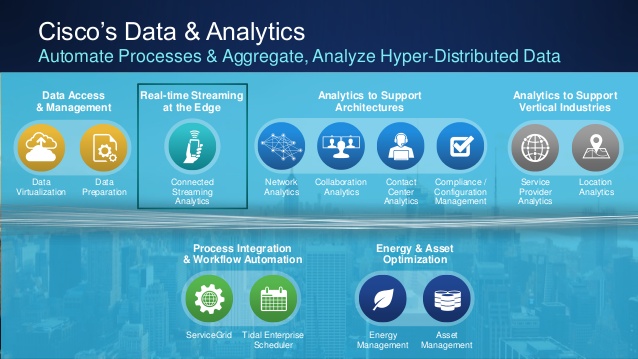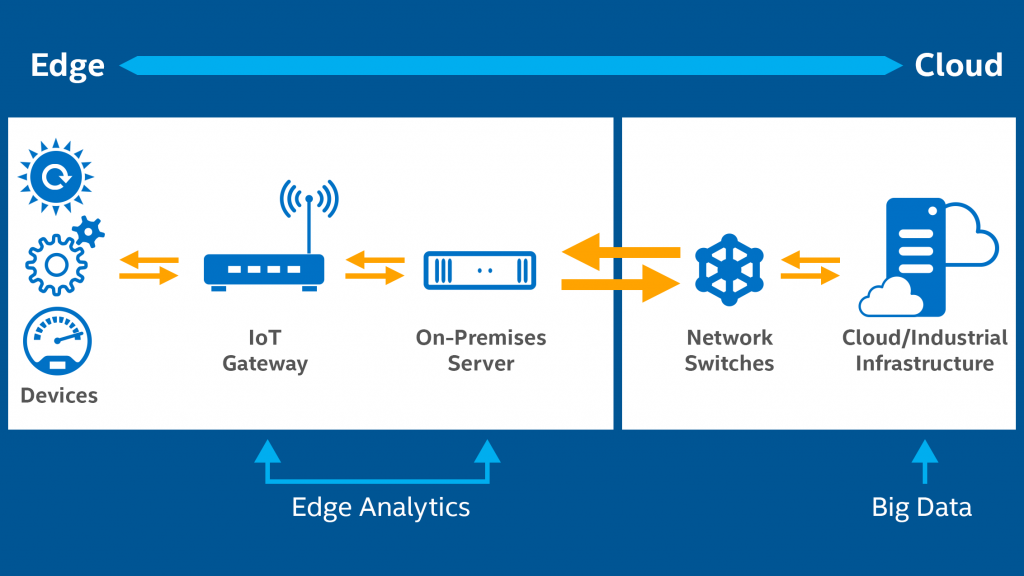Global business and IT are at the cusp of the beginning of IoT era in its complete scale and scope. It’s estimated that by the end of 2020, there will be more than 20 billion connected devices. That’s almost three connected devices per person on the globe.
The kind of data these devices will generate every second is literally beyond imagination. Now, today, the bulk of data storage on an enterprise scale is done on the cloud infrastructure. Applications such as data analytics are also cloud hosted.
However, there are two factors characteristic of data needs in the coming years that make the need for a slightly different processing model obvious. These are:
- The volume of data generated by thousands of sensors within an enterprise network will be massive.
- The kind of data analytic-based inputs required by these sensors and the larger IoT devices will demand much lower latency than what current cloud computing can deliver.
These factors have led IT innovators into devising the idea of edge computing, a system where connected devices and sensors communicate with a middleware layer instead of the cloud server.

This middleware layer consists of computing resources that can perform super-fast information processing and relay feedback to the devices, enabling them to perform “smart” follow-up actions. This almost instantaneous analysis of data and relay of feedback is, in a sense, the backbone of the IoT era. There are other implications of the edge computing model:
- It has massive benefits to lend in industrial applications that require decision making based on recently generated data.
- It’s inherently less expensive as compared to 100 percent cloud storage and computing models, because it involves the use of gateway devices that can help enterprises work with less constricted networks.
- Because edge computing model is standalone, it will continue operations even if one device suffers downtime.
Now, edge computing will not replace cloud computing (both will operate in tandem, as edge will manage low-latency workloads, and cloud will continue to be the storage and computing powerhouse). However, analytics of the present and near future will heavily rely on edge computing models. Here are the top data analytics platforms that can leverage edge computing.
Azure Stream
Manufacturing companies are already excited about the real-time analytics solutions promised by Microsoft’s Azure Stream. It’s made to manage complex event processing (CEP) pipelines, and is suited for IoT applications. Azure Stream comes powered with an SQL analogue that comprises temporal logic support. This means the platform has machine learning capabilities as well as predictive analytics abilities. But no, it still cannot barbecue a steak for you or make you an omelet in the morning! Well, perhaps if you gave it a body with some working arms it could, but this is another topic!

Azure Stream can be integrated with other Azure services to realize wholesome and highly sophisticated data processing.
With advanced job monitoring and debugging functionalities, the platform is developer friendly. It’s made to support decision making and delivers vital insights and reports via interactive dashboards. It’s customizable, it’s scalable, and made to handle critical low-latency workloads – all of which make it a worthy edge computing-based data analytics platform.
IBM Watson
IBM Watson can’t be kept out of any futuristic technology bucket list, and edge computing-powered analytics is no different. Its IoT analytics framework is built to deliver cognitive analyses that helps bring in a lot of insight to hundreds of business use cases. It’s built on Apache Edgent, and leverages the edge computing model to deliver data processing, analytics, and machine learning services.
This platform is made to let enterprises completely control data control between edge commuting devices and the core cloud computing devices. This differential control helps them manage which kind of data to process at edge, and which to process in the cloud. In this manner, IBM Watson’s IoT platform has the potential to deliver a valuable framework that can bring in the advantages of low latency and almost real-time edge data processing in scenarios where it’s needed.
But can it make “Transformers 6” as good as “Transformers 4” and “Transformers 5” Who knows? But it does not need to – that is what Michael Bay’s team will do, anyhow, though this is another topic.
Cisco Connected Streaming Analytics
Cisco’s Connected Streaming Analytics brings in the power of high-velocity data streaming and high-speed analytics and blends it to deliver an IoT-focused platform for enterprises to leverage edge computing. It can stream data from several different data sources (sensors and devices) and extract vital insight from it. It offers a lot of choice in terms of the architecture that an enterprise will want to create around it.

With capabilities to deliver near real-time governance and highly value-adding insights by consuming data from several sources, this platform is a real force in the market for edge computing-powered data analytics. Cisco has marketed this platform particularly for its ease of integration in current data analytics and cloud architectures.
Oracle Edge Analytics
Oracle’s Edge Analytics platform blends the powers of real-time data capturing and high-processing speeds, and presents an analytics platform that can meet the demands of all high throughput and low-latency workloads.
It’s particularly well suited to work with embedded devices, can process data from multiple sources in near real time, and relay feedback to enable sensors and devices to work autonomously. For enterprises looking to implement several event-processing applications, this platform is a pretty safe bet to put your money on. A much safer bet than “John Wick 3,” considering “John Wick 2” was too goofy to take seriously (Why or how did all those people pause their motion at the end of the movie? And Hollywood has totally exaggerated this whole assassin idea as well.)
Intel Analytics Toolkit
Intel has also showcased its interest in the market for edge-computing-meets-data-analytics, as the major IT innovators prepare for the IoT era. This platform is a low-outlay and entry-level analytics solution for enterprises that wish to test the waters of edge computing before committing big time. It leverages Apache Hadoop for data capture, along with basic analytics software modules to deliver entry-level Big Data solutions to enterprises.

The platform also makes use of machine learning capabilities and end-to-end graphical processing to create visual insight that can help with decision making. The modular architecture of this platform makes it easy to fit into existing analytics and cloud architectures.
Leverage edge computing and be ready for the future
Data-driven organizations need to brace up to leverage edge computing to power analytics for the future. This will help them embrace and leverage IoT devices, and will change the way data impacts decision making.
Photo credit: Pixabay



